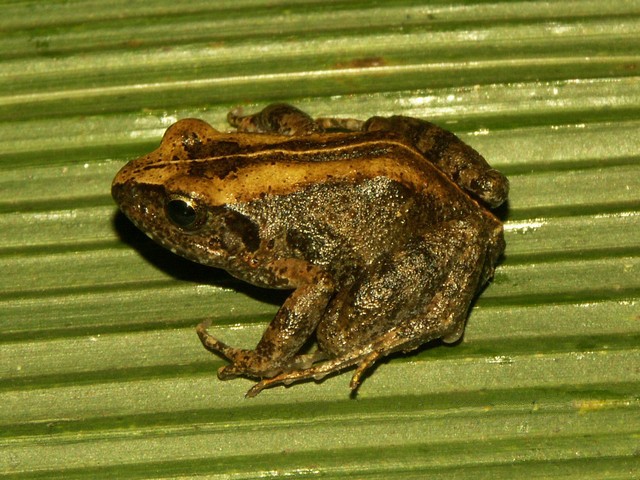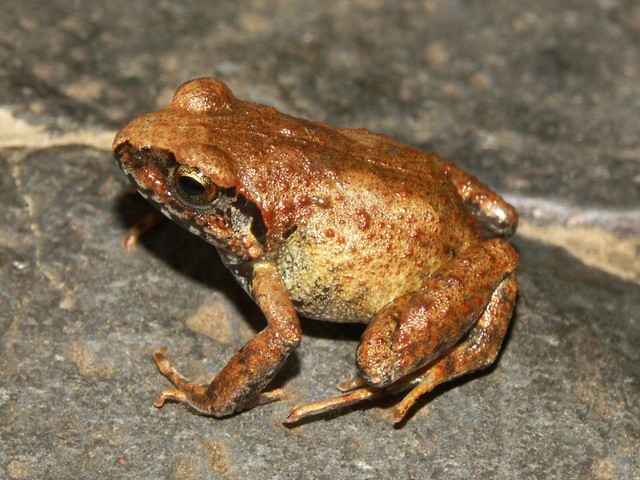The Hidden Jewel of West Africa: Discovering the Arthroleptis palava Frog#
Deep within West Africa’s lush evergreen forests, amidst dense foliage carpeted with moist leaf litter, hides one of nature’s extraordinary yet frequently overlooked species: the Arthroleptis palava frog. Small but intriguing, this amphibian possesses a quiet charm and plays a subtle but meaningful role in maintaining the delicate web of life in its forest home. Known scientifically as Arthroleptis palava, this unique frog belongs to a captivating group known as “squeaker frogs,” renowned for their delicate vocalizations and secretive behaviors.
Little known outside scientific circles, Arthroleptis palava carries hidden stories waiting to be told—subtle tales of adaptation, survival, and interaction within the emerald realms of its West African home. Distinctive behaviors, fascinating camouflage abilities, and an ecological role far greater than its modest appearance suggest make A. palava a species worthy of much deeper exploration.
Taxonomy and Classification#
The Arthroleptis palava frog falls within the family Arthroleptidae, a diverse family colloquially known as squeaker or leaf-litter frogs, characterized by their small size and terrestrial breeding habits. Within its genus, Arthroleptis, are numerous species with region-specific distributions across sub-Saharan Africa. Arthroleptis palava was formally described only recently, signaling the continuing complexity and undiscovered depth of Africa’s amphibian diversity.
Closely related species include other small terrestrial frogs like Arthroleptis poecilonotus and Arthroleptis variabilis, each adapted to their specific geographic locales. The recognition of A. palava as a distinct species underscores how minor biological nuances can lead to significant biodiversity discoveries in these richly forested ecosystems.
Natural Habitat#
A Jewel in the Forest Litter#
The home of Arthroleptis palava is primarily confined to the lower Guinean forests of West Africa, specifically regions within Sierra Leone and Liberia. Here, dense forests are alive with humidity, filled with the aromatic, earthy scent of decaying vegetation. Amidst these leaf-strewn understories, the perfectly camouflaged A. palava thrives, each individual patiently hidden amongst twigs, leaves, and moss-covered logs.
This species exhibits an intimate relationship with its forest habitat, depending entirely on the stability and health of the rich, moist forest floor. The habitat’s consistent humidity not only shields the frogs from desiccation but also supports a bounty of invertebrates—food essential to the survival of this delicate amphibian.
You would rarely see these frogs without intentional searching; their habitat preference for leaf-litter concealment offers them shelter from predators and protection from fluctuating temperature extremes—a testament to evolutionary fine-tuning.
Physical Characteristics#
An Expert at Camouflage#
At first glance, one might overlook the Arthroleptis palava frog entirely, mistaking it for a leaf or a bit of debris on the forest floor. An incredibly diminutive creature, often measuring no more than 20-25 millimeters in body length, it blends masterfully into the browns, tans, and rust-colored leaves beneath its feet. Its dorsal coloration ranges subtly from muted browns and ochre shades to pale grayish-tan—colors perfect for disguising it against moist soil and fallen foliage.
Upon closer inspection, one quickly notices its finely granular skin texture, further enhancing its camouflage capabilities. Its hind limbs, long and slender relative to body size, form excellent tools for leaping short distances with swift proficiency when threatened. Compact yet agile, this little frog demonstrates that size is no hindrance to survival, employing stealth rather than aggressive defense measures.
Behavior and Life Cycle#
The Art of Subtle Survival#
Arthroleptis palava’s survival tactic relies heavily on subtlety. During daylight hours, this discreet creature remains largely inactive, secretively hidden among the decaying leaves to escape the gaze of predators. As night blankets the forest, bringing cooler temperatures and fewer predators, the frog becomes active—cautiously hopping through its forest home seeking nourishment.
This diminutive amphibian is an opportunistic feeder, preying primarily on tiny invertebrates including ants, termites, beetles, and small spiders found plentifully beneath its feet. Its technique is patient and unassuming, carefully watching prey movements before whiplike deployment of its sticky tongue.
A Unique Breeding Strategy#
Unlike typical frog species with aquatic larval stages, A. palava, like others within the Arthroleptis genus, practices direct development. Females lay diminutive clusters of eggs hidden within moist, organic-rich soil and leaf litter. Rather than hatching into free-swimming tadpoles, these eggs undergo a full developmental cycle within their egg membranes. Once developed, tiny versions of adult frogs hatch directly, ready to embrace their terrestrial existence without ever requiring aquatic habitats—a remarkable adaptation to their forest world where standing water is inconsistent.
This breeding behavior, significantly adapted to the terrestrial lifestyle, eliminates the vulnerability stage of tadpole development, granting young frogs immediate mastery over the harsh conditions of their environment.
Ecological Role#
Arthroleptis palava may be small, but its ecological role is substantial, acting as both predator and prey within the food web. By consuming small invertebrates, it helps regulate populations of ants, termites, and other insects, maintaining ecological balance essential for forest health.
Simultaneously, this tiny amphibian forms a crucial link in the food chain for larger predators—birds, snakes, and insectivorous mammals. The presence and abundance of healthy populations of A. palava thus signify a stable, biodiverse ecosystem and help conservationists understand broader ecological health.
Threats and Conservation Status#
Forests Under Pressure#
Sadly, despite their ecological importance, Arthroleptis palava populations face increasing challenges stemming from habitat degradation. West Africa’s Guinean forests are under considerable threat from intensive logging, agricultural expansion, unregulated mining, and urbanization. The consequences for A. palava are stark: as forests disappear or become fragmented, the frog’s sensitive dependency on moist, untouched forest litter habitats makes it especially vulnerable.
While currently evaluated as Data Deficient by the International Union for Conservation of Nature (IUCN), scientists believe its true conservation status may be more precarious, given habitat pressures. Several wildlife organizations stress the critical need for research to better understand population dynamics, distribution, and threats before populations reach critical, irrecoverable levels.
Cultural and Scientific Significance#
Though relatively unknown culturally outside local regions, Arthroleptis palava embodies a key insight for scientists into the evolution of terrestrial amphibian breeding strategies and habitat specialization. Studying its unique adaptation—direct terrestrial development—enriches scientific knowledge of amphibian evolution and biodiversity, possibly holding clues to amphibian resilience in the face of environmental pressures.
Conclusion: Preserving the Hidden Jewel#
The hidden and understated Arthroleptis palava frog may not have global renown, yet it symbolizes precisely why every species matters. In all its quiet uniqueness, this frog represents biodiversity’s subtle and delicate intricacies. The critical steps ahead are clear: learning more about its distribution, ecology, and threats; supporting forest protection; and advocating passionately for West Africa’s precious habitats.
As enthusiasts and conservationists, it becomes our shared duty to safeguard these small gems of nature. By further understanding and championing lesser-known species like Arthroleptis palava, we ensure the beauty and diversity of our world for generations to come.
Let this modest frog’s hidden story become a passionate call to action—one compelling more protection, understanding, and appreciation of the delicate wonders blending quietly into our forests’ leaf-covered floors.


















